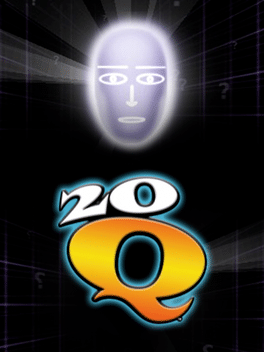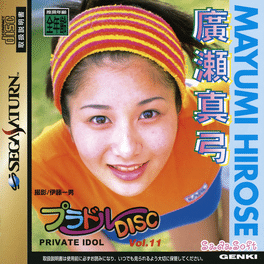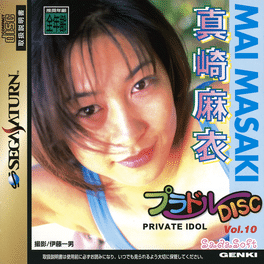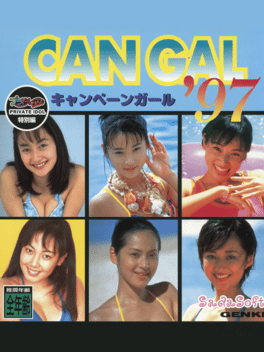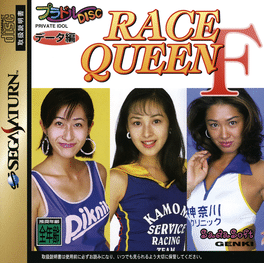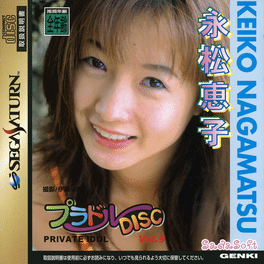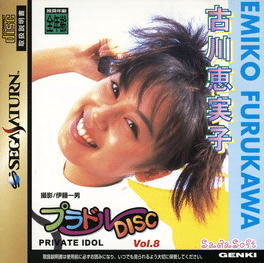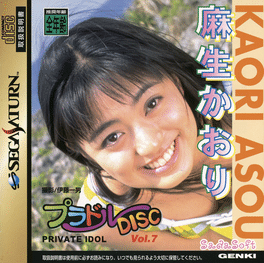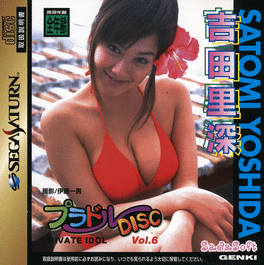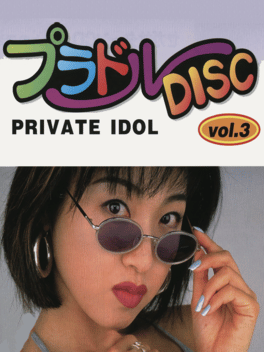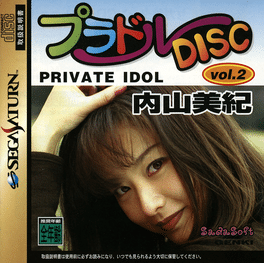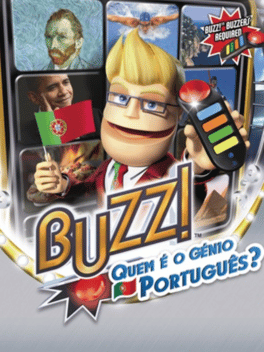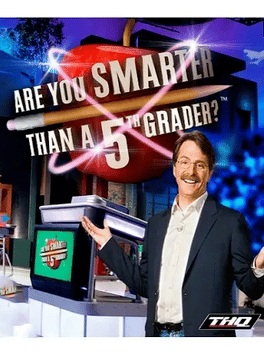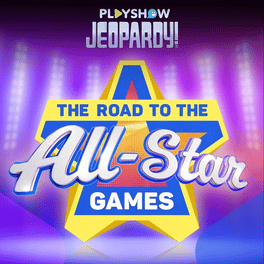Most Popular Quiz Trivia Games - Page 36
-
20Q
2011
20Q
2011
A guessing game in which the "20Q" A.I. will try to read your mind by asking a few simple questions. The object you think of should be something that most people would know about, but not a proper noun or a specific person, place, or thing. -
Private Idol Disc Vol. 11: Mayumi Hirose
1997
Idol Digital Photobook released exclusively in Japan for Sega Saturn. Includes a Q&A interview, a mini-game, and a quiz about Mayumi Hirose. -
Private Idol Disc Vol. 10: Masaki Mai
1997
Idol Digital Photobook released exclusively in Japan for Sega Saturn. Includes a Q&A interview, a mini-game, and a quiz about Masaki Mai. -
Private Idol Disc: Data-hen Race Queen G
1997
Idol Digital Photobook released exclusively in Japan for Sega Saturn. Includes short videos, cast profiles, and an answering machine message collection. -
Private Idol Disc: Tokubetsu-hen Kogyaru Daihyakka 100
1997
Idol Digital Photobook released exclusively in Japan for Sega Saturn. Includes an interview video and cast profiles. -
Private Idol Disc: Tokubetsu-hen Campaign Girl '97
1997
Idol Digital Photobook released exclusively in Japan for Sega Saturn. Includes a quiz and cast profiles. -
Private Idol Disc: Tokobetsu-hen - Cosplayers
1996
Idol Digital Photobook released exclusively in Japan for Sega Saturn. Includes short videos and a card-based fighting minigame. -
Private Idol Disc: Data-hen Race Queen F
1996
Idol Digital Photobook released exclusively in Japan for Sega Saturn. Includes short videos, cast profiles, and an answering machine message collection. -
Private Idol Disc Vol. 9: Nagamatsu Keiko
1997
Idol Digital Photobook released exclusively in Japan for Sega Saturn. Includes short videos, a mini-game, and a quiz about Fujisaki Nanako. -
Private Idol Disc Vol. 8: Furukawa Emiko
1997
Idol Digital Photobook released exclusively in Japan for Sega Saturn. Includes a Q&A interview, a mini-game, and a quiz about Furukawa Emiko. -
Private Idol Disc Vol. 7: Asou Kaori
1997
Idol Digital Photobook released exclusively in Japan for Sega Saturn. Includes a Q&A interview, a mini-game, and a quiz about Asou Kaori. -
Private Idol Disc Vol. 6: Yoshida Satomi
1997
Idol Digital Photobook released exclusively in Japan for Sega Saturn. Includes a Q&A interview, a mini-game, and a quiz about Fujisaki Nanako. -
Private Idol Disc Vol. 5: Fujisaki Nanako
1997
Idol Digital Photobook released exclusively in Japan for Sega Saturn. Includes short videos, a mini-game, and a quiz about Fujisaki Nanako. -
Private Idol Disc Vol. 4: Kuroda Mirei
1997
Idol Digital Photobook released exclusively in Japan for Sega Saturn. Includes a Q&A interview and quiz about Kuroda Mirei. -
Private Idol Disc Vol. 3: Oshima Akemi
1996
Idol Digital Photobook released exclusively in Japan for Sega Saturn. Includes short videos and a mini-game. -
Private Idol Disc Vol. 2: Uchiyama Miki
1996
Idol Digital Photobook released exclusively in Japan for Sega Saturn. Includes short videos and a mini-game. -
Private Idol Disc Vol. 1: Kinoshita Yuu
1996
Idol Digital Photobook released exclusively in Japan for Sega Saturn. Includes short videos and a mini-game. -
Buzz!: quem é o génio português?
2009
Buzz!: Quem é o Génio Português? is an electronic game for PlayStation 2, PlayStation 3 and PSP. This game from the Buzz! series is localized into Portuguese from Portugal and focuses on questions about Portuguese and international history, television, music, and society. -
Are You Smarter Than a 5th Grader?
2007
Class is in session—how much have you forgotten since grammar school? Step up to the podium and put your smarts on the line to see if you’re smarter than a 5th grader! Enjoy game show excitement—just like the show, from the classmates’ peer pressure, to Jeff Foxworthy’s wisecracks. Test your knowledge with 28 tough grade school subjects with over 3,000 challenging questions, which you can answer with help from your 5 classmates. -
Jeopardy! PlayShow: The Road to the All-Star Games
2020
The Road to the All-Star Games contains episodes of our top Jeopardy! contestants and their journey to the All-Star Games tournament. Test your trivia know-how. Can you and your friends top the best Jeopardy! contestants?
